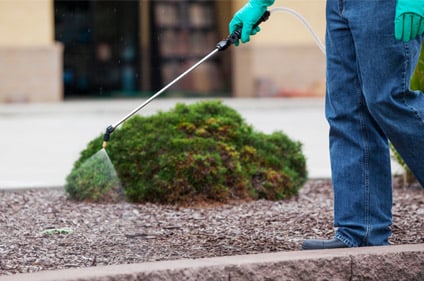1. Product Selection and Application Techniques
This is a very broad topic, but the answers you will need here start with positive weed identification. Some plants are more sensitive to specific herbicides and should be treated with them. Review what product was chosen, and what rate was used. Mature and perennial weeds may require applications at the higher-labeled rates for adequate control.
How much water was the product delivered with? Usually this will be a range on the label. It is recommended to use enough water to get good coverage for optimal control.
Was the equipment properly calibrated?
Any one of these initial issues could derail success. Many times, we've been asked, “How much X-product do I put in my 25 gallon ATV sprayer?” The answer is always it depends. How much area do you treat with that sprayer because the label states to mix per area treated and not per gallon of water?
Over application comes into play here also. Applying extra sprays can burn the above ground foliage before the plant can translocate the material to the roots, allowing the plant to re-grow.
2. The Impact of Mother Nature
What was the wind like on the day of application? Excess wind can cause drift and wreck application patterns, not to mention potentially bringing harm to non-target plants. Many products will specify that applications should not be made when wind speed is over 10 MPH.
How about soil moisture? Inadequate soil moisture is a common issue that gets overlooked. Without enough usable water in the soil, weeds will go into their own state of shut down and not actively take in the herbicide, leading to very poor control.
3. What’s in the Tank?
This starts with the tank mix water. pH and water hardness can degrade herbicide solutions or cause them to become bound up. Additionally, chemical incompatibility of components mixed together may render the herbicide useless. Consider using spreader/ stickers to enhance performance and dye indicators to eliminate skips, misses, and over-application.
4. Timing
This refers to the time of the year rather than time of day. Applications in the spring will miss summer annuals because they have not germinated yet. Summer applications may be less effective, particularly if weeds are stressed. Summer applications also come with the risk of missing winter annuals.
Fall applications tend to be the most effective in that more weeds are present. Most post-emergent herbicides rely on contact and absorption through the foliage, so presence is key. Also perennial weeds are translocating reserves back to the roots, so herbicides will be easily carried to the crown and roots for more complete control. When weeds are younger, the plant is much more actively transporting materials upward.
5. Mowers, Traffic, and Rain Clouds
Most post-emergent herbicides are taken in or absorbed through the foliage, therefore, the longer they are on the leaves undisturbed, the better. Halting mowing for at least 24 hours and eliminating traffic will help. Pay attention to the weather also, opting for a day when rain is not expected for the next 24-48 hours is preferred. Although some adjuvants with stickers will help speed up rainfastness, it is best to allow for extra time on the leaf.
The leaf contact concept is even more critical for granular weed and feed products. These work best when applications are made directly following irrigation or while there is dew present to help the particle stick to the leaf. If these guidelines are not followed when making post emergent weed applications, expect percentage of control to drop dramatically.
Take the time to walk through the application scenario step by step, and feel free to get us involved in determining what happened. And as always, make sure to read and follow all of the label instructions!




